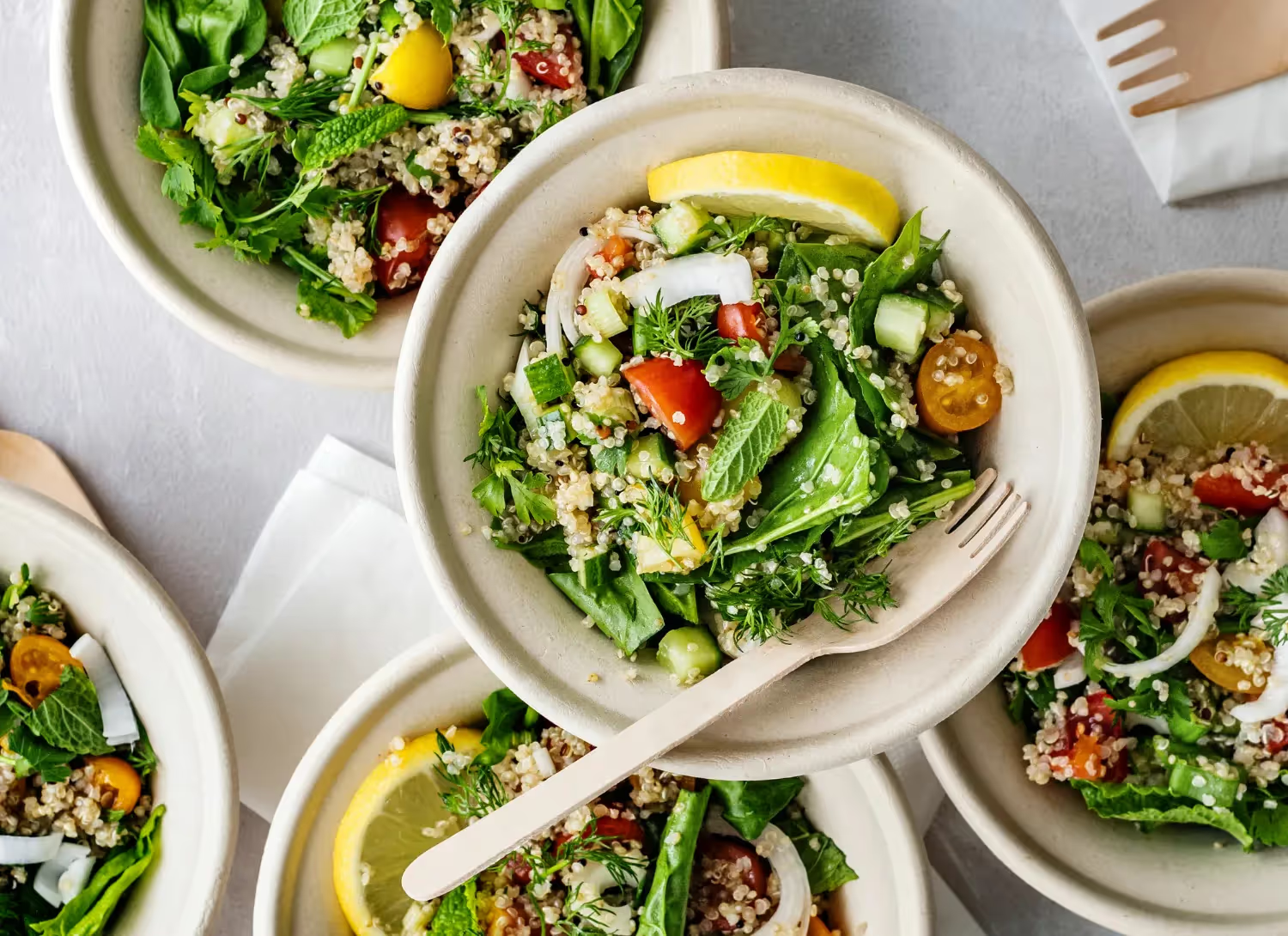The metabolic confusion diet alternates between high and low calorie days, potentially preventing the metabolic slowdown that often sabotages your efforts to lose weight. This approach, also called calorie cycling, has gained attention among those who face hormonal shifts and stubborn weight plateaus.
Rather than following a single calorie target, this strategy keeps your metabolism on its toes.
While the name suggests you can "trick" your metabolism, the real benefit lies in creating sustainable eating patterns that prevent the adaptive responses common with prolonged calorie restriction.
What Is the Metabolic Confusion Diet?

The metabolic confusion diet alternates your daily calorie intake between designated high and low periods.
On low-calorie days, you typically consume around 1,200 calories, while high-calorie days allow 2,000 calories or more. This cycling pattern isn’t always fixed. Some people do alternate days, while others follow a weekly cycle, and some use patterns like five low days followed by two high days.
The theory suggests that maintaining different calorie intakes helps prevent your resting metabolic rate from dropping, a common response to sustained calorie restriction.
Research shows that prolonged dieting can trigger adaptive thermogenesis, where your body becomes more efficient at using fewer calories.
By eating more calories on certain days and following a lower calorie intake on other days, you may help maintain metabolic function while still creating the overall deficit needed for weight loss.
7-Day Metabolic Confusion Diet Plan

This sample week illustrates a practical approach to calorie cycling, which involves alternating between periods of restriction and increased intake. The pattern provides structure while allowing flexibility for social events and varying hunger levels.
Remember that individual calorie needs may be different based on your height, weight, activity level, and metabolic health.
Day 1
Low-calorie day targeting 1,200 calories. Eat protein-rich eggs with spinach and a small portion of berries for breakfast. Then, for lunch, have lean chicken breast with a large salad featuring mixed greens, cucumber, and bell peppers dressed with lemon juice. Finally, for dinner, eat baked cod with steamed broccoli and a small sweet potato. This foundation provides essential nutrients while maintaining the caloric target.
Day 2
After eating fewer calories on the first day, it’s time to kick things up a notch. Day 2 is a high-calorie day where you eat more than 2,000 calories.
Start with Greek yogurt topped with granola, sliced banana, and almonds. Lunch expands to include a turkey and avocado wrap with a whole grain tortilla, plus a side of hummus with carrots. Dinner features salmon with quinoa pilaf and roasted vegetables drizzled with olive oil.
We’ve chosen these specific meals because they help support hormone production and metabolic function.
Day 3
Return to a low-calorie structure with 1,200 calories.
Begin with a vegetable omelet made with two eggs and plenty of non-starchy vegetables, such as mushrooms and tomatoes. Midday brings a large salad topped with grilled chicken and a light vinaigrette. Evening includes lean ground turkey with zucchini noodles and a small serving of berries for dessert.
Day 4
Another high-calorie day reaching 2,000+ calories. Breakfast includes oatmeal with chopped walnuts, cinnamon, and fresh apple slices. For lunch, make yourself a substantial grain bowl with brown rice, black beans, roasted vegetables, and tahini dressing. Then end the day with grass-fed beef, roasted potatoes, and a generous serving of asparagus with butter.
Day 5
Today is a low-calorie day focusing on 1,200 calories with emphasis on protein density.
Start your day with a protein smoothie using unflavored whey protein, spinach, and unsweetened almond milk. Lunch brings herb-crusted white fish with a large portion of steamed vegetables, and dinner features a heart-healthy salad with hard-boiled eggs, cucumber, and a measured portion of olive oil dressing.
Day 6
High-calorie day targeting 2,000+ calories with a focus on healthy fats and complex carbohydrates.
Breakfast includes whole-grain toast with almond butter and sliced strawberries, alongside scrambled eggs. Lunch expands to a Mediterranean-style meal with grilled chicken, quinoa tabbouleh, and a generous portion of olive tapenade. Dinner allows for richer preparations, such as herb-roasted pork tenderloin with mashed cauliflower and green beans sautéed in garlic and olive oil.
Day 7
This is the last day of the cycle, and it’s a low-calorie day.
Keep the calorie count low by eating a frittata made from egg whites and colorful vegetables like red peppers and spinach for breakfast. Then, for lunch, go for a large mixed greens salad topped with grilled shrimp and cherry tomatoes. Conclude the week with baked chicken thigh (skin removed) alongside roasted Brussels sprouts and a small portion of wild rice for sustained energy for dinner.
The Science of Metabolic Adaptation in Women

Your metabolism at 40 can make traditional dieting approaches less effective, and it all starts with the declining estrogen levels that happen during perimenopause and menopause. These contribute to increased insulin resistance and preferential fat storage around the midsection.
Research indicates that women's metabolisms are more sensitive to calorie restriction than men's, triggering faster adaptive responses that can stall weight loss within weeks.
The concept of metabolic flexibility becomes particularly relevant for older women. Studies have found that calorie shifting helps participants maintain their resting metabolic rate, whereas traditional calorie restriction leads to significant decreases.
Sample Foods for High vs. Low Days
Any diet is only as good as what you eat, the metabolic confusion diet included. It’s important to only eat nutrient-dense foods that support hormone production during high-calorie periods and select satiating foods on your low-calorie days.
Understanding which foods serve each purpose helps create sustainable meal patterns.
High-Calorie Day Examples
High-calorie days should emphasize foods that support metabolic function and hormone production. Include fatty fish, such as mackerel and sardines, for omega-3 fatty acids, as well as nuts and seeds for healthy fats. Additionally, eat starchy vegetables like butternut squash and beets to provide sustained energy.
Complex carbohydrates from sources like farro, buckwheat, and steel-cut oats provide lasting fullness while supporting thyroid function and leptin production.
Low-Calorie Day Examples
Eat high-volume, low-energy-density foods on low-calorie days that keep you satisfied without the excess calories.
Leafy greens, such as arugula and kale, form the foundation of meals, while lean proteins, including white fish, skinless poultry, and egg whites, provide muscle-preserving amino acids. Non-starchy vegetables, such as cauliflower, asparagus, and bell peppers, add bulk and micronutrients without significantly impacting calorie counts.
Snacks, Hydration, and Protein Anchors
Snacks aren’t your enemy. Done right, they’re your best friends. The right snacks can help bridge nutritional gaps without messing up your daily calorie goals.
Low-calorie day options include cucumber slices with a small amount of hummus or celery sticks with measured portions of almond butter. High-calorie days allow for more substantial snacks, such as Greek yogurt with berries or a handful of mixed nuts. Adequate hydration supports metabolic processes, with herbal teas and sparkling water providing variety without calories.
Recap of Key Concepts

The metabolic confusion approach offers a structured yet flexible alternative to traditional dieting methods. But it isn’t perfect. Success still depends on your effort and, more importantly, understanding of how to use this strategy to create a sustainable diet. The alternating pattern helps prevent the psychological and physiological adaptations that often derail long-term weight loss efforts.
Calorie Cycling Isn’t Magic — It’s Strategy
First things first, your body cannot truly be "confused" just because you’re eating more one day and less tomorrow, but it can benefit from periods of adequate fuel that support optimal function. The strategy helps prevent the severe calorie restriction that often leads to muscle loss, fatigue, and eventual diet abandonment.
Knowing that higher calorie days are planned into the schedule reduces the likelihood of uncontrolled eating episodes that frequently derail restrictive diets. This psychological component proves just as important as any metabolic benefits for long-term success.
Signs It’s Working vs. Signs to Modify
How do you know that the metabolic confusion diet is working for you? It’s simple. Your body will tell you.
Positive indicators include stable energy levels throughout the week, manageable hunger on low-calorie days, and steady weight loss over several weeks. You should feel satisfied and energized on high-calorie days without experiencing extreme cravings or the urge to overeat beyond your planned intake. Mood stability and maintained exercise performance are also signs that your body is changing, and in a good way.
But what happens if you’re doing the diet wrong or your body is telling you to stop it altogether? What should you watch out for?
Warning signs requiring modification include excessive fatigue, intense cravings that persist beyond the first week, rapid weight regain between cycles, or obsessive thoughts about food timing.
If low-calorie days feel unbearably restrictive or high-calorie days trigger binge eating patterns, the calorie targets may need adjustment.
Individual needs are particularly for active women or those with higher baseline metabolic rates.
How to Transition into Long-Term Flexibility
Maintaining a healthy weight requires gradually moving away from rigid calorie cycling and eventually relying on your intuition to tell you how to best take care of your body. Doing so is easier said than done, but this is the secret to a stress-free diet.
You can start by increasing awareness of natural hunger and satiety cues while maintaining the loose structure of higher and lower intake days. This helps preserve the metabolic benefits while reducing the psychological burden of constant calorie tracking.
Once you’ve gotten used to it, consider adopting a more flexible approach where you naturally eat lighter on less active days and increase intake around exercise sessions or social events.
Eventually, the goal will transform to maintaining a weekly calorie balance rather than hitting specific daily targets.
This evolution from structured cycling to mindful flexibility supports both weight maintenance and a healthy relationship with food.
Sources
- Rosenbaum, Michael, and Rudolph L. Leibel. "Adaptive Thermogenesis in Humans." International Journal of Obesity (2005), vol. 34, no. 0 1, 2010, p. S47, https://doi.org/10.1038/ijo.2010.184.
- Feraco, Alessandra, et al. "Assessing Gender Differences in Food Preferences and Physical Activity: A Population-based Survey." Frontiers in Nutrition, vol. 11, 2024, p. 1348456, https://doi.org/10.3389/fnut.2024.1348456.
- Davoodi, Sayed H., et al. "Calorie Shifting Diet Versus Calorie Restriction Diet: A Comparative Clinical Trial Study." International Journal of Preventive Medicine, vol. 5, no. 4, 2014, p. 447, https://pmc.ncbi.nlm.nih.gov/articles/PMC4018593/.
FAQs
What exactly is a metabolic confusion diet?
Metabolic confusion, also known as calorie cycling or calorie shifting, is a diet strategy that involves alternating between high-calorie and low-calorie days or weeks. The goal is to "confuse" your metabolism, preventing it from adapting to a consistently low caloric intake, which can often lead to weight loss plateaus.
Why is this diet approach often recommended for women over 40?
As women approach and go through menopause, hormonal shifts can cause the metabolism to slow down, making weight loss more challenging. A standard low-calorie diet can sometimes slow it down further. Metabolic confusion aims to keep the metabolism more active, potentially making it a more effective strategy for breaking through the stubborn plateaus common in this age group.
How do I determine my calories for high and low days?
While the full plan will provide specifics, a general guideline is to eat at your maintenance calorie level (or slightly above) on high-calorie days and create a moderate deficit (e.g., 300-500 calories below maintenance) on low-calorie days. This cycle prevents your body from thinking it's in a state of starvation.
Is metabolic confusion safe for everyone?
For most healthy individuals, calorie cycling is generally considered safe. However, it involves careful planning and may not be suitable for those with a history of eating disorders, diabetes, or other specific medical conditions. It is crucial to consult with a doctor or registered dietitian before starting any new, structured diet plan.
Can I exercise while on the 7-day metabolic confusion plan?
Yes, exercise is encouraged! For best results and energy levels, it's often recommended to schedule your more intense workouts (like strength training or HIIT) on your high-calorie days and opt for lighter activities (like walking, yoga, or stretching) on your low-calorie days.














